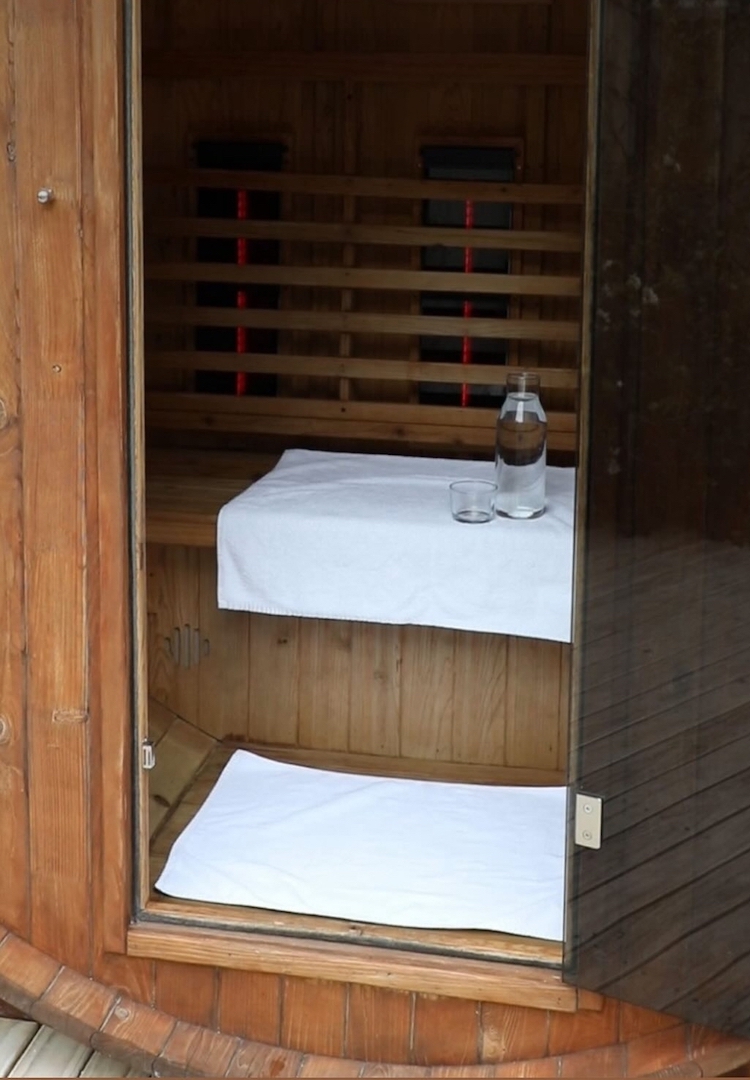What is the vagus nerve and how is it connected to my mental health?
PHOTOGRAPHY BY TOBIAS ROWLES
WORDS BY HANNAH COLE
Another practice to add to the toolkit.
I’ve undergone a well-documented journey over the last couple of years, investigating my mental health and dabbling in various rituals to see if they could provide any relief. All this pondering and discussion with health specialists have taught me a lot. Slowly but surely, I’m understanding the human body and its wondrous functions.
Interested to hear how others navigate the world? Head to our Life section.
Earlier this year, at a time when I needed to be ordered to chill out, my naturopath off-handedly mentioned the vagus nerve. I was slow to listen and act, but she would be proud to know I’ve finally embarked on my awakening. To help me out, I spoke to Renae Swann, a psychologist at the progressive online therapy practice, The Indigo Project.
What is the vagus nerve?
As Renae explains, the vagus nerve is a super long cranial nerve (the longest one we have) that starts from the brainstem at the back of the head and reaches all the way to the abdomen. In Latin, ‘vagus’ means ‘wandering’, “which probably suggests how widespread it actually is. It goes everywhere,” she tells me.
Functionally, it serves a very important purpose as part of the parasympathetic nervous system, sending signals back and forth from your brain to your stomach. “The sympathetic [nervous system] will respond to threats in your environment (fight and flight) and then the parasympathetic will kick in to calm you back down,” Renae says. It’s through the vagus nerve that our body receives the message that the coast is clear, allowing us to return to a normal state.
For those of us prone to anxiety, it’s likely our vagal tone (the activity of our vagus nerve) is low, meaning it takes longer for us to calm down and recover. We’re constantly in fight or flight mode, on edge, looking out for potential threats, with an increased heart rate and jitters. When anxiety and stress linger, our overall mental health and mood are greatly affected.
“We can’t stop the stressful situations from happening,” says Renae. “Unfortunately, that’s life. But we can work with the vagus nerve to help us respond in better ways.” Activating the vagus nerve allows us to build resilience and assists with emotion regulation, bettering our mental health and changing the way we respond in times of stress.
How is it ‘activated’?
Renae shares that there are certain practices that help to increase the vagal tone. “The more activated it is, the greater the vagal tone, and the calmer we tend to be.” From an external perspective, Renae creates a safe place for her clients. “If you’re incorporating signals of safety, then your vagal tone is better,” she explains.
In her sessions, she uses a calm voice and facial expressions to facilitate this, but it’s a worthwhile practice to incorporate into our homes and workplaces as well. A clear, stress-free and friendly environment is always going to be a positive – albeit a small one at times – for mental health.
Deep belly breathing and box breathing (imagine a box: spend four counts on each side flowing from inhaling, holding it, exhaling and holding it again) are simple ways to bring about this sense of calm. Chanting, singing, humming and meditating work well too.
“I definitely recommend [this practice] every day,” she says. Her key piece of advice is to set an alarm on your phone or laptop to go off at least once a day – ideally two or three – and do a five-minute check-in of what’s happening in your body. “Is your heart rate up? Are you breathing really shallow?” says Renae. By body scanning and deep breathing, you’re bringing awareness to your being and taking an easy action to increase your vagal tone.
Daily practices for mental wellbeing
I’m all about building a mental health ‘toolkit’ that I can pry open whenever it’s needed, selecting the right tool for the job. I ask Renae what her daily practices are, hoping to add some more alternatives to this (already heavy) belt.
Her suggested toolkit includes yoga and getting a massage, especially on the neck or shoulders. She recommends “one of those really quick ones that you can get in shopping centres [because] your trapezial muscles are meant to be amazing for vagal nerve stimulation”. Singing to activate the vibration in your throat or jaw, prebiotics and ASMR videos (to which I nodded my head buoyantly in agreeance) are some of her other go-to’s, as is splashing cold water on your face or the back of the neck. Renae tells me it’s “a really quick way to pull you out of very high anxiety states”.
Her favourite thing to do, though? “Drive around, sing loud in your car and drink from a curly straw.” Looking after our mental wellbeing is often seen as a process of improving oneself, but, as Renae points out, a higher vagal tone helps us to be altruistic, empathetic and compassionate. “The more we can do this stuff, the happier we’ll be as a collective, not just individually,” she tells me. For the sake of my mind and those around me, I’m off to buy myself a curly straw. Into the handy box it goes.
For more on the vagus nerve, try this.













